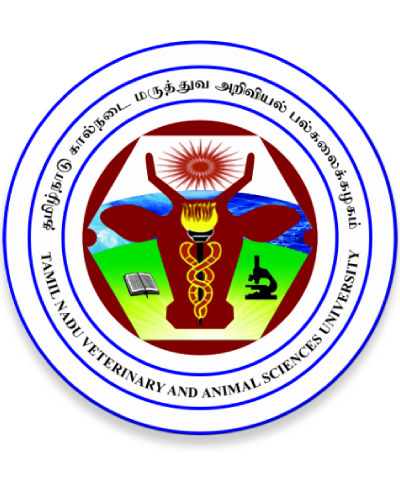- Your cart is empty
- Continue shopping

ICAR - KRISHI VIGYAN KENDRA, NAMAKKAL Hosted by
Tamil Nadu Veterinary and Animal Sciences University

Sorghum (sorghum bicolor) is the most important drought resistant cereal fodder crop grown in well and less fertile soil. Covering the maximum cultivated area among fodder crops, sorghum is grown in all parts of the country except the cool hilly areas. It has high tolerance to drought and excessive rainfall. There are single, two and multi-cut varieties/hybrids of sorghum giving one to six cuts per crop producing 50 to 100 tonnes/hectare of green fodder. To avoid prussic acid or cyanide toxicity to livestock, the crop should be harvested at about 50 per cent flowering or after irrigation at the pre-flowering stage. The crop is also useful for hay and silage making.
Climatic requirement:Sorghum is a drought resistant annual crop. It thrives in tropical climate with a temperature range of 25-35oC. It is not suited to higher elevations (more than 1200 m).It can be grown under an annual rainfall of 300-350 mm. Since it is largely grown for grain & stover is used for feeding the animals. Its stover contains 6-6.4%, crude protein and 32-36% crude fibre.
Soil condition: Well-drained sandy loam to loam soils with a pH range of 6.5 to 8.2 are ideally suited for its growth. The field should be thoroughly prepared and levelled for weeds free sowing. The crop stand and growth is obtained better on well-prepared soils.
Varieties: CO-27 & CSV32F (Single cut), COFS-29 & COFS-31 (Multicut)
Special feature of CO-31 Fodder Sorghum variety (Released in 2014)
Field preparation: One ploughing followed by two (crosswise) harrowing are sufficient to get a good seed bed. The crop cannot tolerate longer water stagnation hence, good drainage facility is important.
Seed and sowing: Sowing should be done by drill or hand sowing at distance of 30 cm row to row using a seed rate of 40 kg/ha. Broadcasting of seeds should be avoided. The seed should not be put more than 2-2.5 cm depth during sowing. For summer sowing of multicut varieties using seed rate of 7.5 kg/ha types during mid March to mid April is the best period, while for monsoon season crop sowing should be done preferably between 25th June and 10th July.
Nutrient management: The field should be manured with 10 t FYM to meet requirement of secondary and micro nutrients. Basal application of 45:40:40kg N, P2O5 and K2O should be given at sowing time followed by top dressing with 40kg N/ha one month after sowing. In low rainfall and rainfed areas 60 Kg N/ha is applied at sowing time. It has been observed that if possible 20-30 N/ha may be applied coincided with rainfall at 30-35 day stage If crop suffers dry spell spraying of 2% urea solution should be done after release of stress.
Water management: July sown rainy season crop may also need l-2 (25-30 days interval) irrigations depending upon distribution of rains. For summer sown crop 5-6 irrigations (10-15 days interval) are required due to high evaporative demand of atmosphere.
Weed management: One hand weeding during 10-15 days after sowing is very effective to control the weeds. Pre-emergence application of Atrazine @ 0.50 kg a.i. ha in 600 litres of water is also very effective.
Harvesting: The crop should be harvested at 60-75 days of sowing (50%, flowering stage) in case of single cut varieties and first cut at 50-55 days and subsequent cut at 40 days of intervals increase of multicut varieties.
Yields: 100-140 tonnes of green fodder per hectare from 7 cutting in a year.
Reviews
There are no reviews yet.